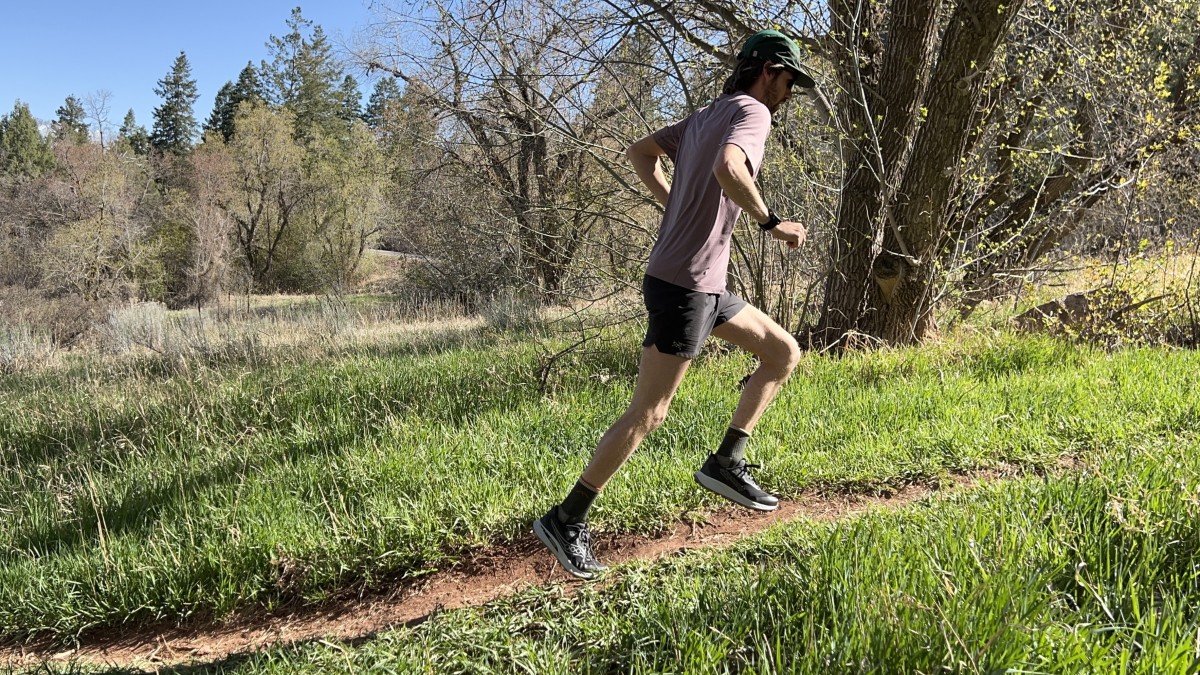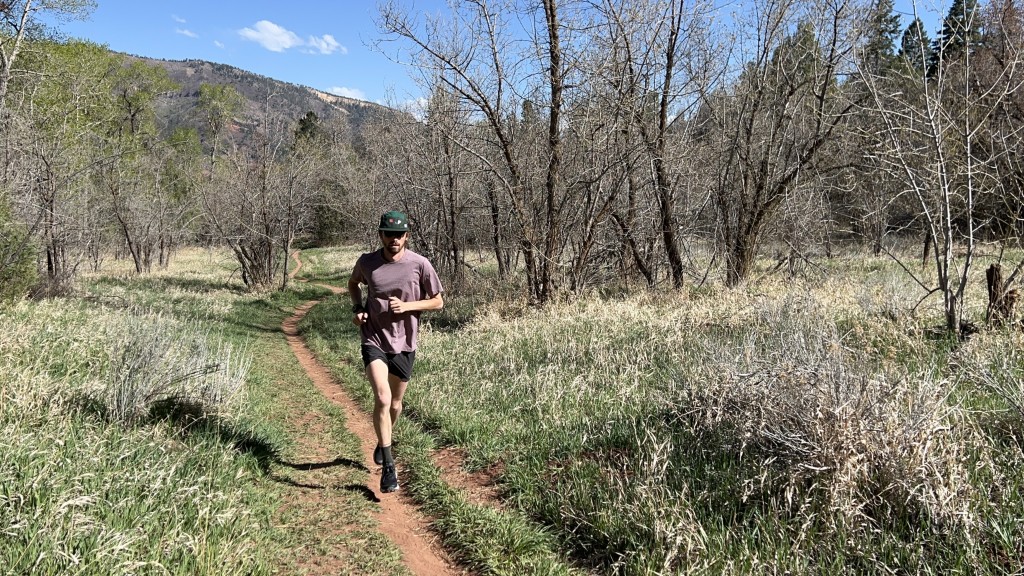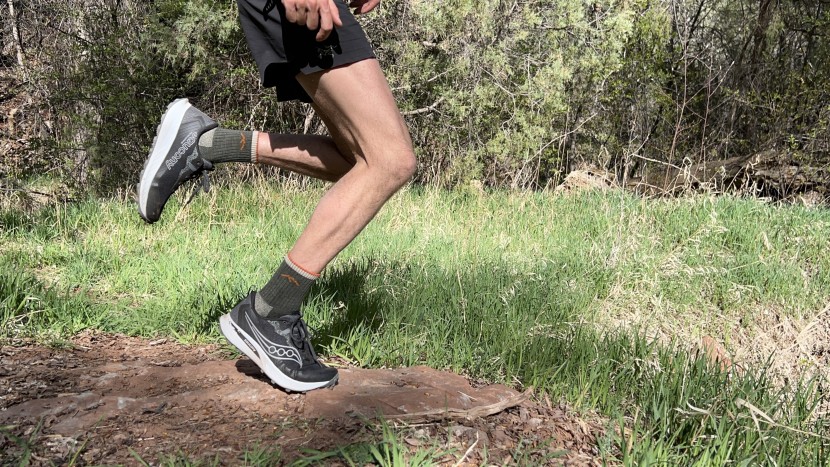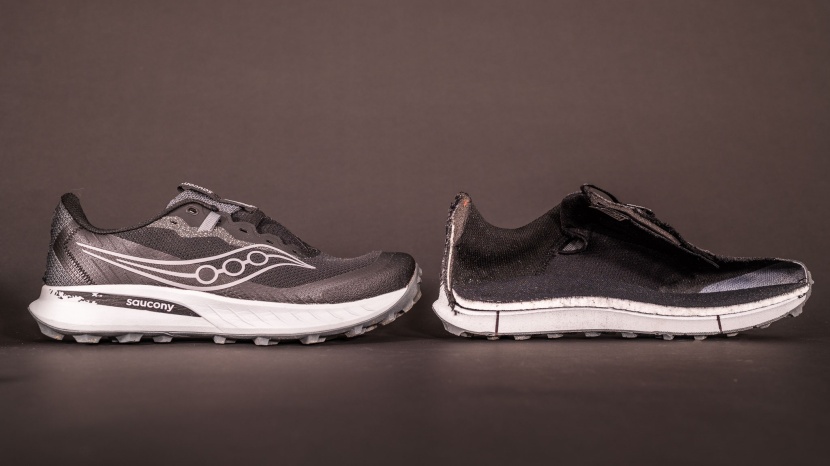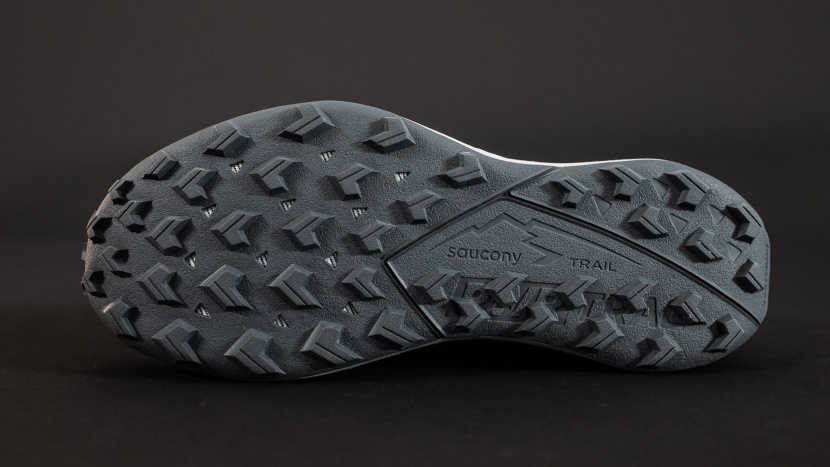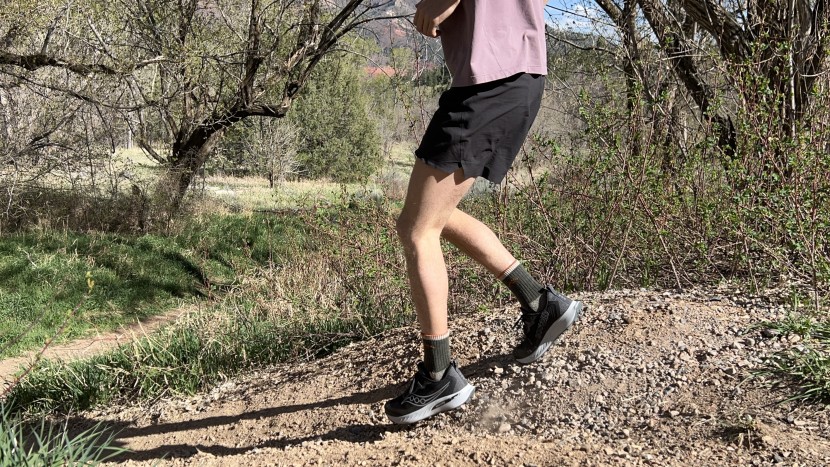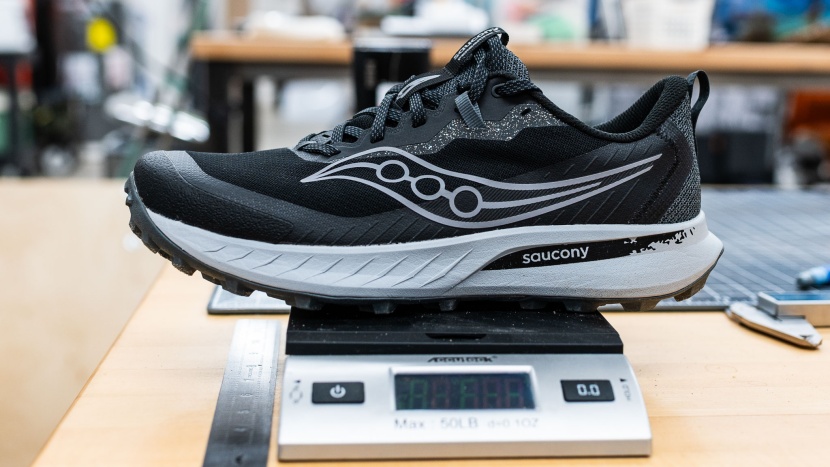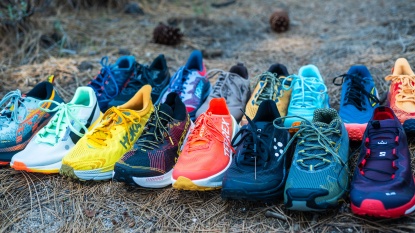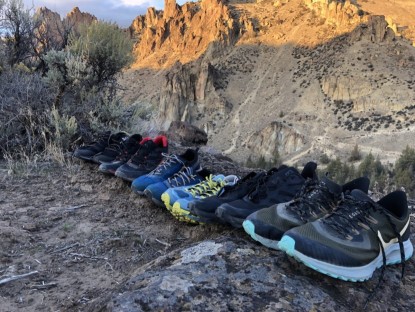
Our Verdict
Our Analysis and Test Results
Saucony may have been listening to our feedback as the Peregrine 15 has been updated in both the midsole and outsole. This version still maintains its low weight and agility, but offers increased comfort and enhanced traction via a more durable outsole compound. This makes this shoe work better for longer runs and propels it up our ranks, proving itself a great all-arounder.
Comfort and Fit
The upper is what we've come to expect from the Peregrine series. It's comfortable and didn't cause me any issues during long runs and tempo efforts. The fit is more classic with a pointed toe, so those who like some room on the pinky side may opt for something with a more rounded toe. That said, I still find the model provides all-day comfort and helps keep the foot secure even when in off-camber terrain. The heel lockdown is secure, and the laces are comfortable with a thin padded tongue.
The updated PWRRUN foam is claimed to be softer, but I couldn't tell a huge difference from previous models. This version feels a touch beefier than previous iterations but maintains roughly the same stack and drop. If anything, I found the v15 to feel a little further from the ground — which I think reduced its sensitivity, making it better for long-distance comfort.
Stability
I found the Peregrine 15 to have excellent stability due to its low stack and low heel drop. The shoe feels stiff but never overly rigid. Though the forefoot platform is slimmer than other wider shoes, I still found plenty of support through my ankles, knees, and hips. This low stack also provided good grip and flexibility on more technical terrain and off-camber ridgelines. This model excelled over a wide range of terrain — I'd recommend it most in the middle ground between moderate and technical. There are better options on both ends of the extremes, but the Peregrine handles both well enough.
Traction
The main highlight of this upgrade is the increased durability and hardness of the newly reformulated PWRTRAC outsole. This provides better grip in rocky terrain without increasing the overall weight. The lug design is roughly the same as in previous models — we measured them at 5.1mm, making them among the tallest in our lineup. I found these to be adequate for most terrain styles — though if you're often in loose talus and scree, you may want lugs that are a little less directional. The Peregrine still isn't the best option for mud and wet trails, but if you are running trails in the drier West, this is a great option that doesn't break the bank.
Foot Protection
I didn't notice a huge difference in underfoot feel between the v14 and v15 models. The low stack still gives plenty of sensitivity, with the cloth rock guard preventing painful stabs from sharp rocks. While not a full-blown rock plate, I think it's more than adequate for a shoe of this nature. The upper is as protective as previous models, with a durable upper and ultraweld toe cap. If you're looking for something more protective, you will likely want a stiffer midsole and more rigidity features throughout the model.
Weight
Our in-house lab team measured the Peregrine 15 at 10.11 oz per shoe (US men's size 10.5). While there are lighter options on the market, you would be sacrificing some of the comfort and protection provided by the Peregrine. The model feels lively throughout my stride, and I never felt like it was overbuilt. Its low stack and drop kept me engaged. Those with long ultras in the schedule will most likely want something with more protection and cushioning. I'd recommend the Peregrine most for daily runs through 50k.
Should You Buy the Saucony Peregrine 15?
The Saucony Peregrine 15 provides both excellent performance and value. We've been asking for the changes made here for a few iterations now, and this is the best Peregrine to date. We'd recommend the model to those who want a light all-arounder that is just at home on gravel roads or technical ridgelines. We'd recommend this to all different experience levels. If you're planning on sticking to one style of trail, you may opt for a shoe more tailored to that surface type.
What Other Men's Trail Running Shoes Should You Consider?
If you're looking for something even more nimble and light, we'd recommend checking out the Nnormal Kjerag. If you like Peregrine but want a touch more liveliness, the La Sportiva Prodigio Pro would give a similar platform with increased energy transfer. Ultimately, you can't go wrong sticking with the Peregrine 15. It's up there with the market leaders but is at a much more affordable price.


